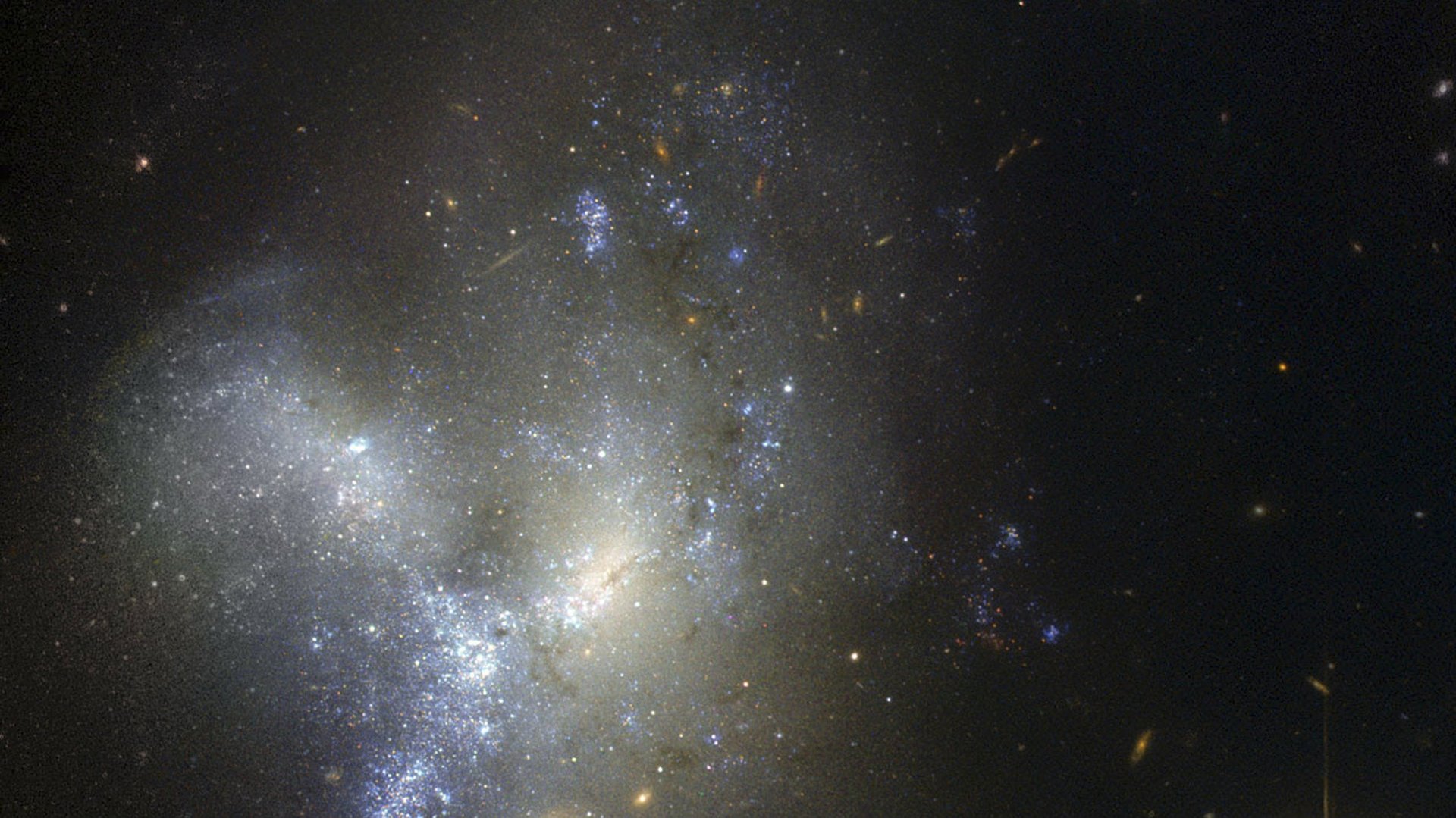There have probably been trillions of alien civilizations, and yet we may still never see one
Sorry, everybody. We’re just not that special.


Sorry, everybody. We’re just not that special.
In more than five decades of scanning the heavens, the search for extraterrestrial intelligence (SETI) has found no sign of alien life. Yet now two American astronomers, in the scientific equivalent of a back-of-the-envelope calculation, are estimating that over the course of its history the universe has seen at least half a trillion technologically advanced species.
The paper in Astrobiology by Adam Frank and Woodruff Sullivan notes that, in just the last few years, we’ve gained a much clearer sense of how hospitable the universe is to life. NASA’s Kepler space telescope has identified thousands of planets in our neighborhood of the galaxy, along with their sizes and distances from their stars. From there it’s fairly easy to guess how many may hold liquid water, which is probably essential for complex life. In our Milky Way galaxy alone there are, by this estimate, some 60 billion such “habitable” planets, write Frank and Sullivan.
The big remaining unknown is how many of these planets give rise to the kinds of lifeforms that build advanced technology (if nuclear weapons and Oculus Rifts can be called “advanced”). Since Earth is the only one we know of, the guesses vary wildly, but one such civilization per 10 billion habitable planets is generally considered “highly pessimistic,” wrote Frank in the New York Times yesterday (paywall). In astronomy-speak, this means the figure could be 10, 100 or even 1,000 times too low.
Using that “pessimistic” proportion, and other numbers from Frank and Sullivan’s paper, I calculated how many alien civilizations should have emerged within various subregions of the universe during its history:
Remember, 420 billion intelligent civilizations is the “pessimistic” estimate. But sadly—or happily, depending on your view of aliens—it doesn’t make us any less alone.
Though Frank and Sullivan wisely avoid putting a number on how many alien species are knocking around right now, we can do our own back-of-the-envelope reckoning. A crucial unknown factor is how long a technologically advanced civilization lasts before either going extinct or blasting itself back to the stone age. Judging by the past century of human history, even a thousand years might be optimistic. But let’s be really optimistic and call it a million years. That’s the average lifespan of a mammalian species that doesn’t invent the means of its own destruction.
I’m also going to assume that, though the universe is 13.8 billion years old, advanced species didn’t begin to appear until a couple of billion years ago. It took most of the universe’s history to form the kinds of planets, rich in heavier elements, on which creatures like us could evolve.
So if there have been 420 billion civilizations in the past 2 billion years, each one lasting a million years, then on average, about 210 million of them have existed simultaneously at any given moment.
That may seem like a lot of aliens to talk to. But not in a cosmos as big as ours. The observable universe is an estimated 93 billion light years in diameter. If you sprinkle 210 million civilizations throughout it like raisins in a cake, they’ll be spaced about 125 million light years apart.*
Our own galaxy is only about 100,000 light years wide, so that’s a journey of 1,250 Milky Ways laid end to end before you come to the next intergalactic refueling stop. Even waving hello from a distance is pretty much out of the question, given that the furthest planets we can currently detect are just 25,000 light years away. (For what it’s worth, the SETI people have higher hopes.)
Of course, this assumes civilizations are evenly distributed throughout space. In reality, the universe is clumpy, so they’ll be more concentrated in parts. And sheer random luck might have planted one within easy reach of us. Then again, that might be very bad luck indeed.
Update: Seth Shostak, senior astronomer at the SETI Institute, has responded to this article saying that “many have guessed” that one in a million habitable worlds would produce advanced intelligence, rather than one in 10 billion. If so, and sticking to the other assumptions, there’d a good chance of at least one other civilization in our own galaxy existing at the same time as ours, meaning it would much closer, and thus more plausibly detectable.
*Calculation: In a sphere of radius 46.5 billion light years, volume 4.21 x 1032 cubic l.y., with 210 million civilizations, there will be one civilization per 2 x 1024 cubic l.y., i.e., in a cube 125 million l.y. across.